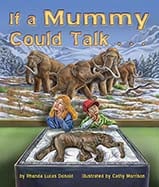Alignment to CORE and NGSS Standards

| Grade | Number | Standard |
|---|---|---|
| 1 | RI.1.9 | Identify basic similarities in and differences between two texts on the same topic. (story versus For Creative Minds non-fiction component) |
| 2 | RI.2.3 | Describe the connection between scientific ideas or concepts, or steps in technical procedures in a text: Earth processes: quickly/slowly, wind/water shape land, plate tectonics, maps, water: ocean/rivers/lakes-solid or liquid, STEM: drawings, plant basic needs, seed dispersal, biodiversity, state of matter: solid/liquid, small objects make larger, heating/cooling substance causes observable change, add/subtract 100-20 mentally, equal groups for multiplication foundation, odd/even numbers, place value 3 digits, skip counting, measure length using 2 different measurements (inches/feet/yard/cm/m), compare objects by measurement, number line, time to 5 minutes, money/currency, line plot, picture graph, bar graph 4 categories, shapes/angles/number faces, divide shapes into halves, thirds, quarters, fables/folktales from diverse cultures, rhyme and rhythm, compare two/more versions same story, collective nouns |
| 2 | RI.2.4 | Determine the meaning of words and phrases in a text relevant to a grade 2 topic or subject area: Earth processes: quickly/slowly, wind/water shape land, plate tectonics, maps, water: ocean/rivers/lakes-solid or liquid, STEM: drawings, plant basic needs, seed dispersal, biodiversity, state of matter: solid/liquid, small objects make larger, heating/cooling substance causes observable change, add/subtract 100-20 mentally, equal groups for multiplication foundation, odd/even numbers, place value 3 digits, skip counting, measure length using 2 different measurements (inches/feet/yard/cm/m), compare objects by measurement, number line, time to 5 minutes, money/currency, line plot, picture graph, bar graph 4 categories, shapes/angles/number faces, divide shapes into halves, thirds, quarters, fables/folktales from diverse cultures, rhyme and rhythm, compare two/more versions same story, collective nouns |
| 2 | RI.2.9 | Compare and contrast the most important points presented by two texts on the same topic. (story versus For Creative Minds non-fiction component) |
| 3 | L.3.6 | Acquire and use accurately grade-appropriate domain-specific words and phrases: Weather prediction, weather versus climate, natural hazards, life cycles, changing environments: organisms survive/move/adapt/die, animal group behavior, inherited traits, instinct/learned behavior, extinct animals, fossils, individual advantages survival/mating, habitat survival: physical/behavioral adaptations, living things change habitats, force/motion: strength/direction/electric/magnetic, multiplication/division, unknown number m/d equation, m/d fact families, two-step word problems, place value rounding, fractions, time to minute, liquid volumes, scaled picture graph/bar graph, measurements to fractional inches, line plot, area, square units, area=multiplication/division, perimeter, shapes in different categories (rhombus/rectangle=quadrilateral), divide shapes by equal area, fables/folktales/myths from diverse cultures, compare/contrast stories from same author/series, |
| 3 | RI.3.9 | Compare and contrast the most important points and key details presented in two texts on the same topic. (story versus For Creative Minds non-fiction component) |
| 5 | RI.5.5 | Compare and contrast the overall structure (e.g., chronology, comparison, cause/effect, problem/solution) of events, ideas, concepts, or information in two or more texts. (Paired reading-story versus For Creative Minds non-fiction component) |
| K | RI.K.9 | With prompting and support, identify basic similarities in and differences between two texts on the same topic. (comparing story to For Creative Minds non-fiction component) |
| K-4 | K-4)2.1B | The student understands the different ways people of diverse racial, religious, and ethnic groups, and of various national origins have transmitted their beliefs and values |
| K-4 | K-4)3.10.1 | A culture has distinctive characteristics |